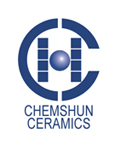Top articles
- High-purity 99.7% alumina ceramics helpful to semiconductor manufacturing technology
- Alumina Ceramic Grinding Balls: High-Efficiency Solutions for Industrial Grinding
- How to Select Suitable Wear-Resistant Ceramic Lining Tiles in the Mining Industry
- Advantages of Ceramic Rubber Composite Liners in Industrial Applications
- How to Install Alumina Ceramic Liners for Long-Lasting Adhesion?
- 99% alumina bulletproof ceramics are the preferred materials for protective devices
- Alumina Ceramic Substrates:Characteristics,Advantages,Disadvantages,and Applications
- Why do alumina industrial ceramics wear out?
- The reason of abrasion resistant ceramic tiles falling off when pasted on equipment
- Seven aspects of advantages & applications of alumina ceramic substrates
Latest articles
- High-purity 99.7% alumina ceramics helpful to semiconductor manufacturing technology
- Alumina Ceramic Grinding Balls: High-Efficiency Solutions for Industrial Grinding
- How to Select Suitable Wear-Resistant Ceramic Lining Tiles in the Mining Industry
- Advantages of Ceramic Rubber Composite Liners in Industrial Applications
- How to Install Alumina Ceramic Liners for Long-Lasting Adhesion?
- Welcome to EXPOMIN 2025
- 99% alumina bulletproof ceramics are the preferred materials for protective devices
- Alumina Ceramic Substrates:Characteristics,Advantages,Disadvantages,and Applications
- Why do alumina industrial ceramics wear out?
- Chemshun Ceramics Chinese New Year Holiday Notice
Your browsing history

Global Monolithic Ceramics Market Overview 2017: Key Market & Business Trends & Key Global Players
Dublin, May 09, 2017 (GLOBE NEWSWIRE) -- Research and Markets has announced the addition of the "Monolithic Ceramics - A Global Market Overview" report to their offering.
Worldwide market for Monolithic Ceramics forecast to be US$51.2 billion in 2017 and projected to reach US$67.5 billion by 2022 at a CAGR of 5.7% between 2017 and 2022. Electrical & Electronic Components lead the global demand for Monolithic Ceramics which is forecast to be US$26.3 billion in 2017 and is expected to maintain a CAGR of 5.7% between 2017 and 2022 and reach a projected US$34.7 billion by 2022.
The report analyzes the monolithic ceramic product types comprising Non-Oxides and Oxides. Monolithic Oxide Ceramics' market further reviewed by its sub-type including Aluminum Oxide and Zirconium Oxide. The study also analyzes the key applications of monolithic ceramics consisting of Catalyst Supports, Electrical & Electronic Components, Filters, Wear Components and Others.
Monolithic ceramics constitute the largest product category within the broader field of technical ceramics and include those ceramics that, as a rule, are not composites. On the other hand, in monolithic ceramics, the interface chemistry, as also the nature of mechanical and chemical bonding established between the two phases can be entirely different from that obtained in ceramic composites.
Monolithic ceramics are typified by their special features, such as reliability, durability and resistance to high temperatures, which makes them indispensable in some of the more demanding applications. These ceramics can be fabricated without a reinforcement material and have a polycrystalline microstructure.
Much of the demand for Monolithic Ceramics is derived from their extensive use in the automotive, electrical and electronics, power and defense industries. A growing global demand for electronic devices, such as laptops and mobile phones, has been instrumental in propelling the market for these materials. Asia-Pacific's rapidly expanding electrical and electronics sector has ensured that the region remains at forefront in terms of demand for Monolithic Ceramics.
One possible limiting factor to this momentum can be the high cost of processing and excessive requirement of energy that go into obtaining the final product. Some of the other factors playing prominent roles in impacting the market for Monolithic Ceramics include greater use of these ceramics in fabricating turbine blades and other automotive components and stringent pollution control measures being rolled out by developing nations.








